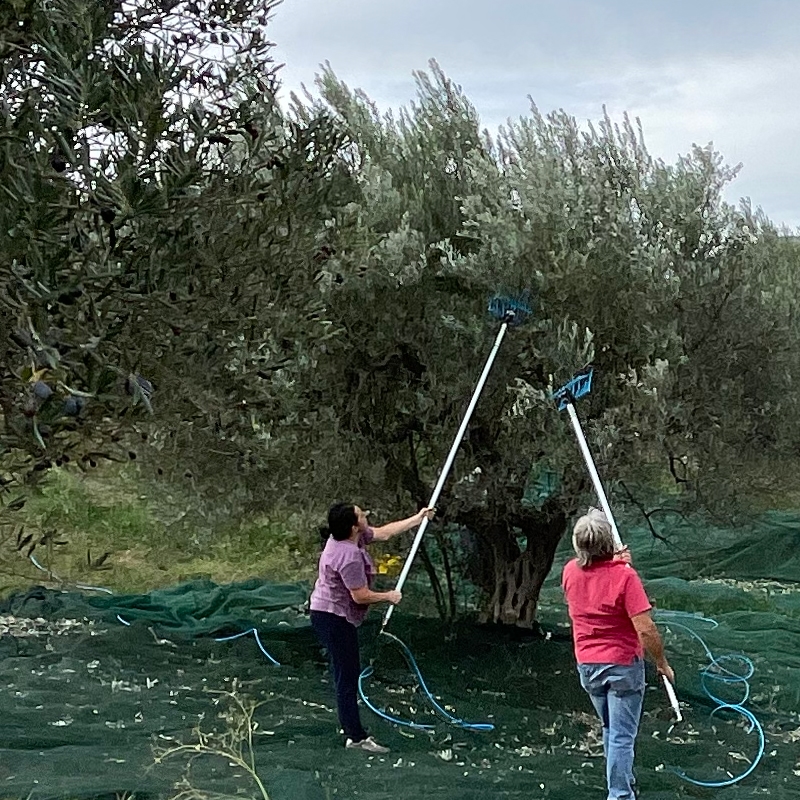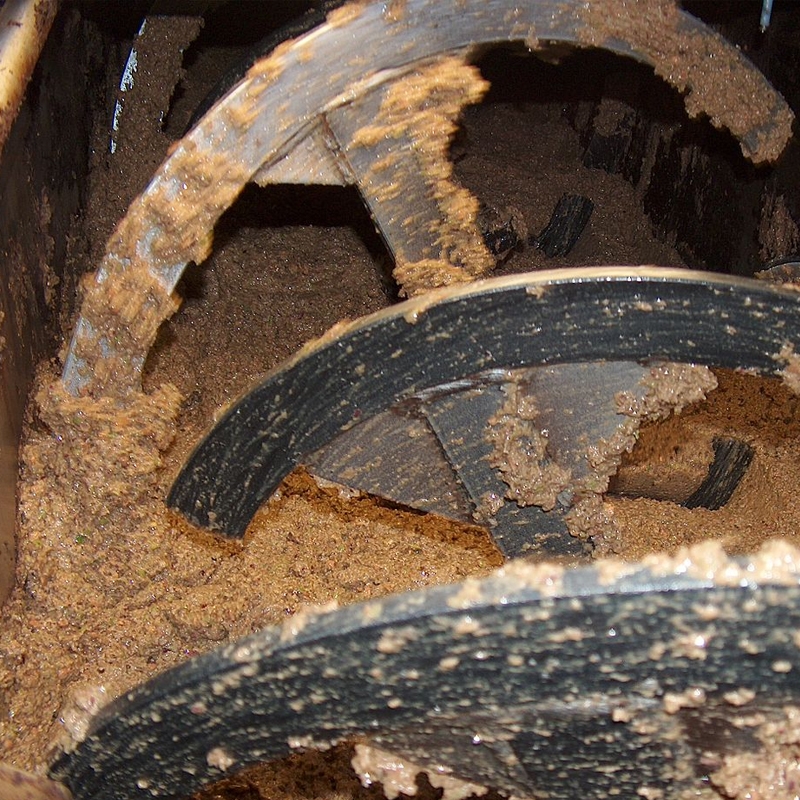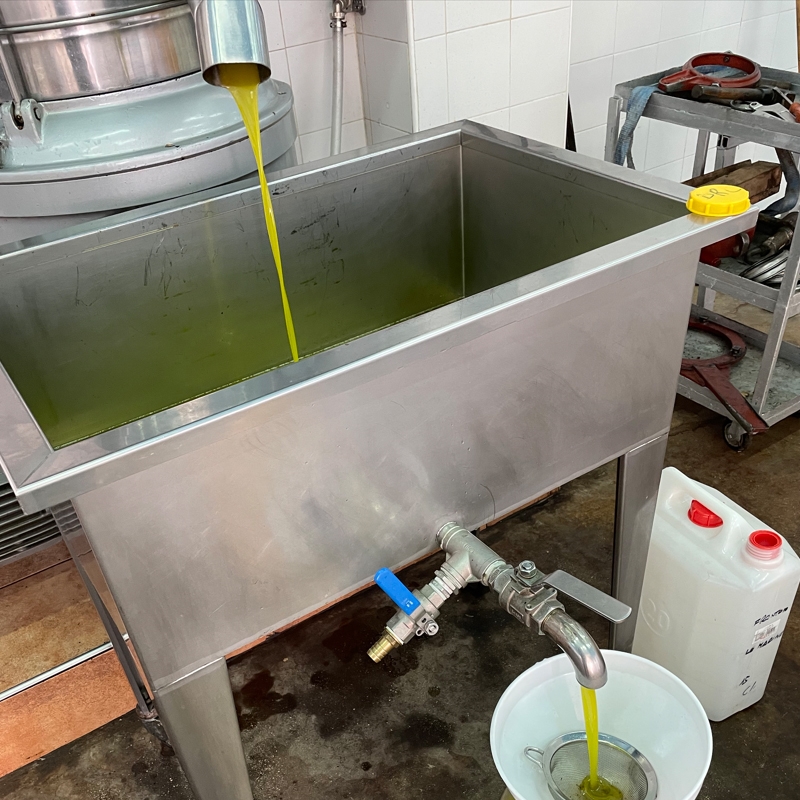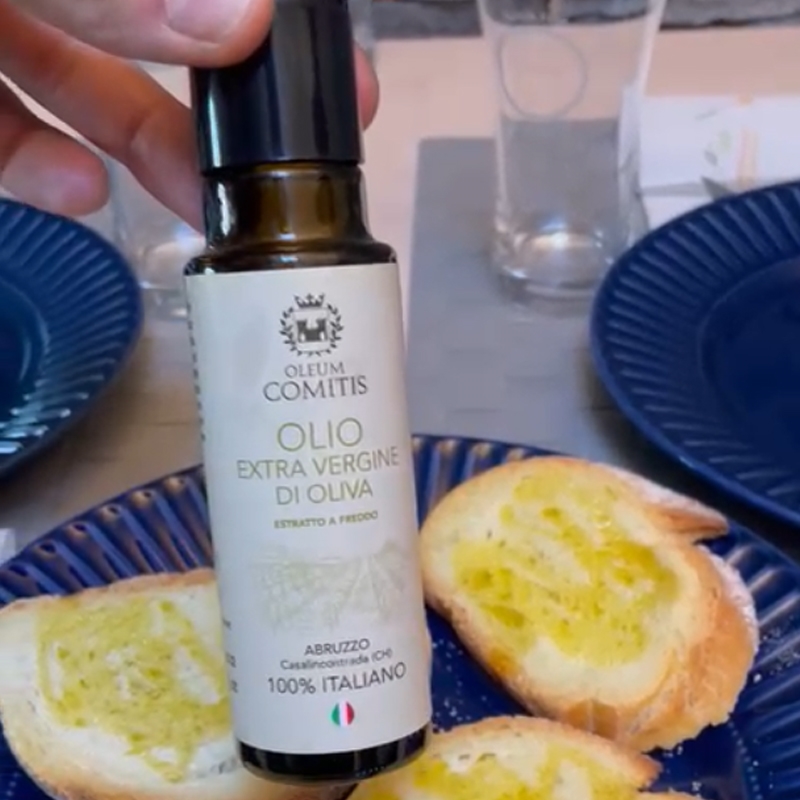From tree to table
From the olive trees to the table, this is the journey that our Abruzzo olives make.
Thanks to this selection of the best production methods, between tradition and innovation, we are able to guarantee an extra virgin olive oil with intact beneficial properties and a unique taste experience.

Olive harvest
A traced supply chain
We only use Italian olives (Abruzzesi) from a traced and controlled supply chain, harvested manually with the aid of technological means (harvesters) that simulate the movement of the hand so as not to cause damage to the plant and above all to the fruit, in order to guarantee the quality of our product.
Crushing - Milling
Strictly within the first eight hours
Once harvested, the olives are transported to the mill in perforated polythene boxes, which allow air to enter so as not to increase the temperature. The pressing takes place within the first 8 hours in order to avoid oxidation of the fruit.
The washing phase is followed by the milling, the first real phase of olive oil extraction. The milling is carried out by pressing: a modern technique where the peel, pulp and stone of the olives are reduced to a paste made up of more or less coarse fragments.
It is possible to intervene on the granulometry of the pasta, accentuating or not the organoleptic characteristics of the oil such as bitterness and spiciness. The pressing represents a critical phase for the quality of the oil as this process leads to the activation of the enzymatic kit of the fruit which catalyzes various biochemical reactions at the base of the sensory and health characteristics of the extra virgin olive oil.
Our oil mill uses a hammer crusher which reduces the olives to a homogeneous paste ready for the kneading phase.


Gramolature
The cold extraction phase
The kneading is the process which, through a machine called gramola, disemulsifies oil and paste, collecting the liquid in larger drops thanks to a slow movement of the mass and its heating. It is a key moment in the processing of olive oil, which in some way will decide its quality, taste and also its quantity.
Depending on the temperature to which the pasta is subjected, in fact, the oil earns or not the right to the denomination "cold" and changes its organoleptic qualities. From 25° to 27°, the product maintains excellent quality and can boast the definition "cold". Between 27° and 30° and beyond, the production will increase in quantity, but the product will be mediocre, as it will have lost its fruity taste and various key substances, such as polyphenols.
In our oil mill, the latter takes place with temperatures of use that do not exceed 26° (in this case we speak of cold kneading) and for a time of about 30 minutes, thus maximizing the organoleptic, olfactory and gustatory characteristics of the oil.
This process allows the olive paste to reach the optimal temperature in which the natural enzymes present in the paste are able to fully activate.
Decanting
The last step that gives life to our oil
In our oil mill this process takes place through volumetric pumps, the paste from the kneader is 'pushed' to a horizontal axis centrifuge, commonly called a decanter. A defined quantity of water at a controlled temperature is added to the pasta (from 20 to 50 liters of water per 100 kg of pasta to be centrifuged) which, by diluting the pasta, favors its subsequent separation.
The decanter is composed of a cylindrical-conical drum with a horizontal axis that rotates at a speed of approximately 3500 rpm. Due to the different specific weight, centrifugation separates three "phases": oil must (containing a small fraction of vegetation water), vegetation water, and pomace (solid phase). Inside the drum, coaxial with it, a low-speed rotating auger (10-20 rpm) conveys the solid part towards the outlet.
The last phase in the production of olive oil is the separation: after the extraction of the liquid from the paste, the must obtained still contains a minimum quantity of water, which will be separated by exploiting the non-miscibility of the oil, which is lighter, and some water. This process is carried out mechanically thanks to centrifugal separators, which carry out the separation thanks to high-speed rotation.
The liquid that comes out of the machine is finally him: the Extra Virgin Olive Oil, OLEUM COMITIS!
At the end of the pressing, the e.v.o. obtained is filtered from processing residues and stored in steel silos in refrigerated rooms and is ready to be bottled.


From the olive trees to the table
Here is the journey that our Abruzzo olives make
Using the best production methods, between tradition and innovation, we are able to guarantee an extra virgin olive oil with intact beneficial properties and a unique taste experience.
Oleum Comitis
our numbers
The result of this work is an Extra Virgin Olive Oil of excellent quality and unmistakable flavour, with unique organoleptic characteristics!


